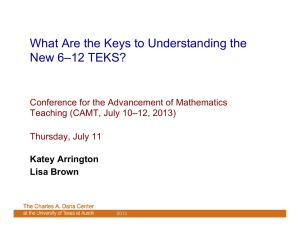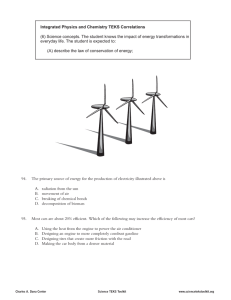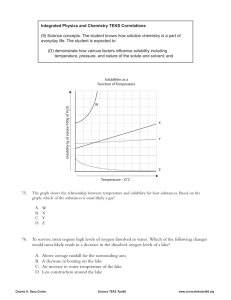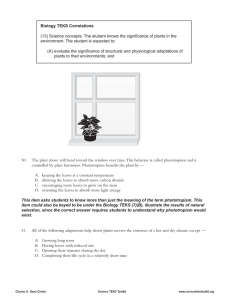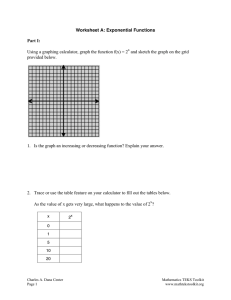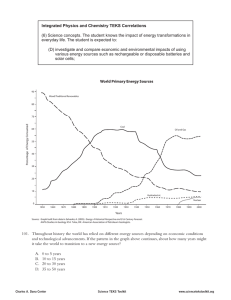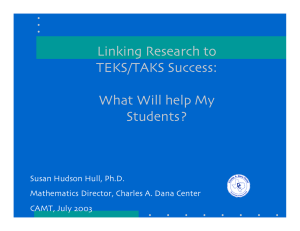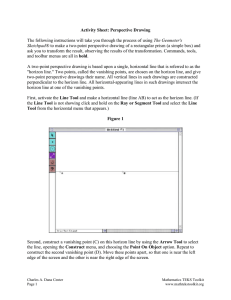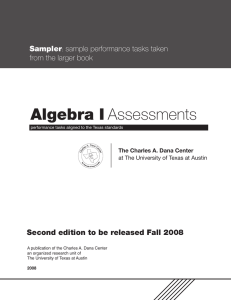What Are the Keys to Understanding the New K–8 TEKS?
advertisement
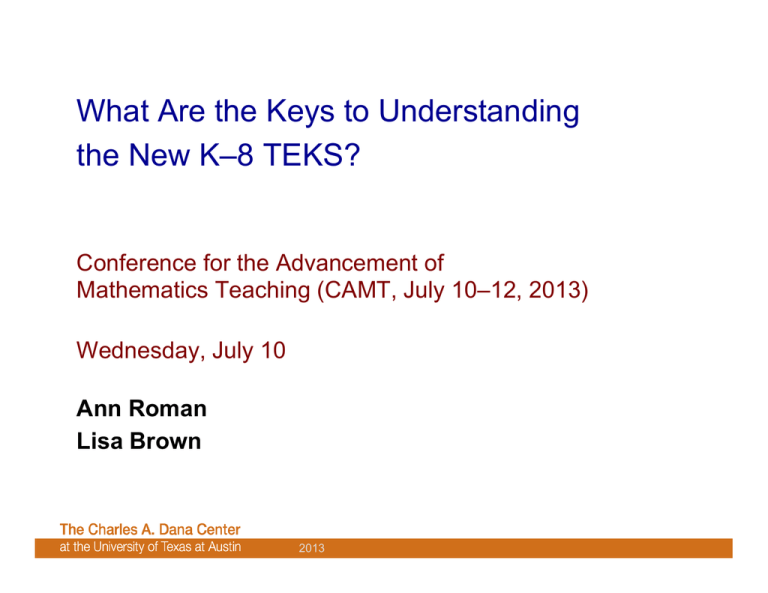
What Are the Keys to Understanding the New K–8 TEKS? Conference for the Advancement of Mathematics Teaching (CAMT, July 10–12, 2013) Wednesday, July 10 Ann Roman Lisa Brown 2013 Session Overview Agenda • Introduction to the Charles A. Dana Center • Structure of the TEKS • Strands and Knowledge and Skills Statements in the mathematics Texas Essential Knowledge and Skills (TEKS) adopted in 2012 • Becoming a student of the 2012 TEKS • Questions to further our study 2013 2 Introduction to the Charles A. Dana Center What we do The Dana Center collaborates with local and national entities to improve education systems so that they foster opportunity for all students, particularly in mathematics and science. We are dedicated to ensuring every student leaves school prepared for success in postsecondary education and the contemporary workplace—and for active participation in our modern democracy. 2013 3 Introduction to the Charles A. Dana Center How we do it We carry out our work by advocating for high academic standards and by building the capacity of education systems to ensure that all students can master the content described in these standards. We help our partners translate research into practice and adapt promising innovations to meet their needs. 2013 4 Geographical Scope of Our Current Work The Charles A. Dana Center at The University of Texas at Austin limited project work moderate project work significant project work 2013 5 Structure of the TEKS A brief overview Course Title • Introduction • Strands • Knowledge and Skills • Student Expectation 2013 6 Strands and Knowledge and Skills Statements Big ideas What looks familiar? What looks unfamiliar? 2013 7 Becoming a Student of the 2012 TEKS What will be most worthy of educators’ time? A modest proposal: Instead of spending time comparing sets of standards, spend more time on studying the 2012 TEKS and what you are now responsible for teaching. 2013 8 Explore a Big Idea How does it grow? • Choose one big idea. • Investigate what students are required to know and be able to do about that idea. • Continue your exploration to see how the idea develops over time. 2013 9 Structure of the TEKS A brief overview Course Title • Introduction • Strands • Knowledge and Skills • Student Expectation 2013 10 Big Ideas Starting points for conversation Place value K.2.B 1.2.B,C 2.2.A,B 3.2.A,B 4.2A,B 5.2.A Addition and subtraction K.3 1.3.A,E,F 2.4.B,C,D 3.4.A 4.4.A 5.3.K 6.3.C,D 7.3 8.? 2013 Representing and analyzing data K.8 1.8 2.10 3.8 4.9 5.9 6.12 6.13 7.12 8.11 Perimeter, area, and volume 2.9.F 3.6.C,D, 3.7B 4.5.C,D 5.4.G,H 5.6 6.8.B,C,D 7.8 7.9 8.6A,B, 8.7.A,B 11 Questions to Further Our Study Other considerations 1. How do the standards in this grade in the other strands relate/interact? 2. How do the process standards work with the content standards? 3. What are the implications for instruction? 2013 12 A process for collaborative study 1. Study the standard. 2. What do the related standards in the grade before and after require? 3. How do the standards in this grade in the other content categories relate/interact? 4. How do the process standards work with the content? 5. What are the implications for instruction? 6. What tools are available? 2013 13 Contact information • The Charles A. Dana Center, www.utdanacenter.org 2013 14
